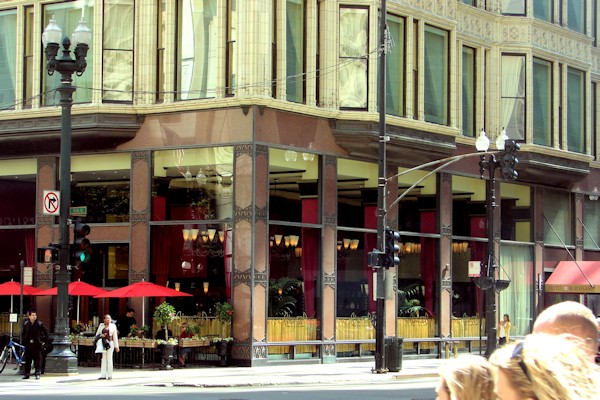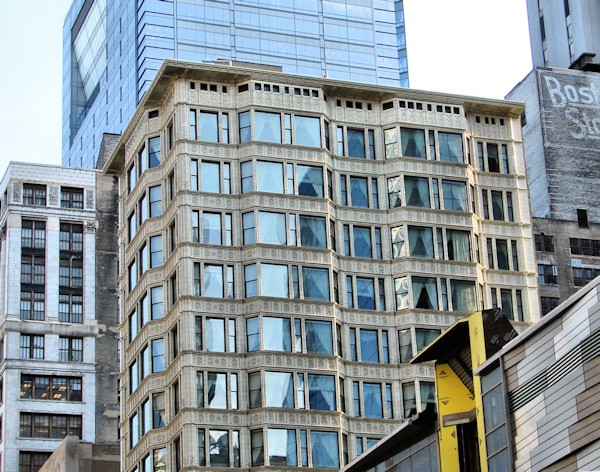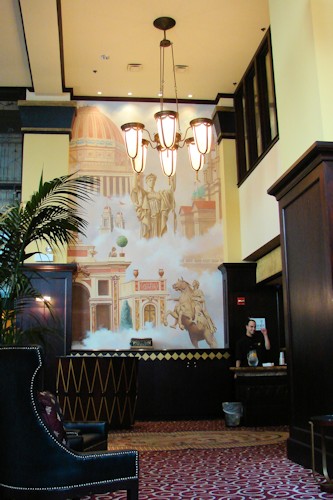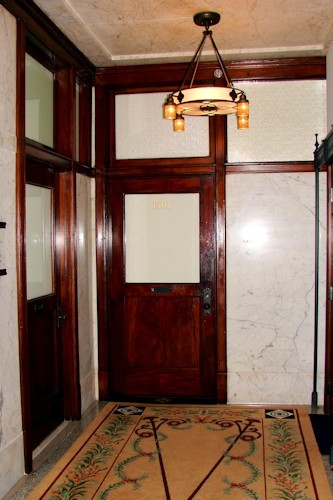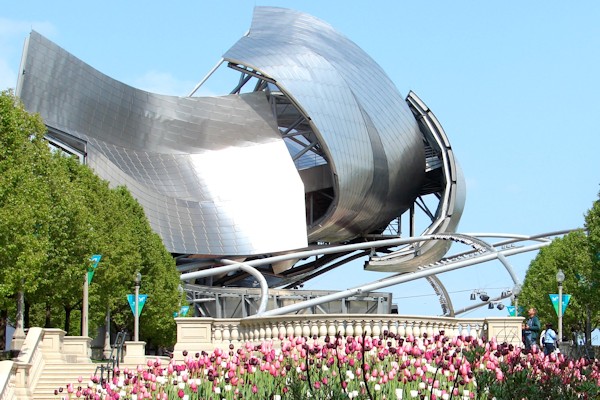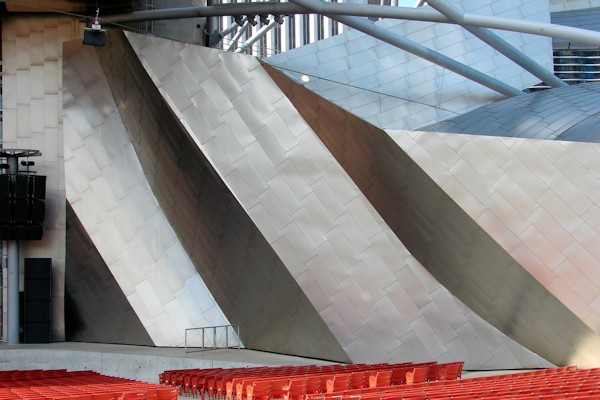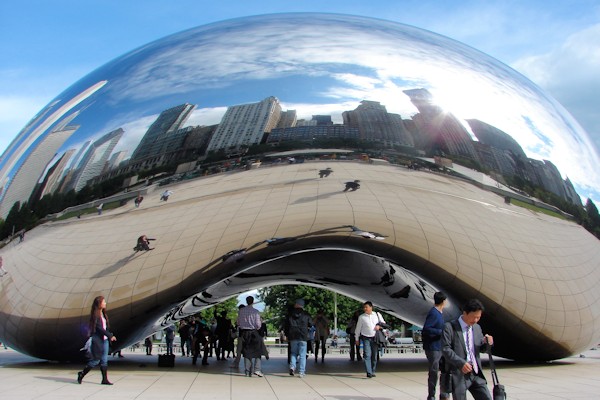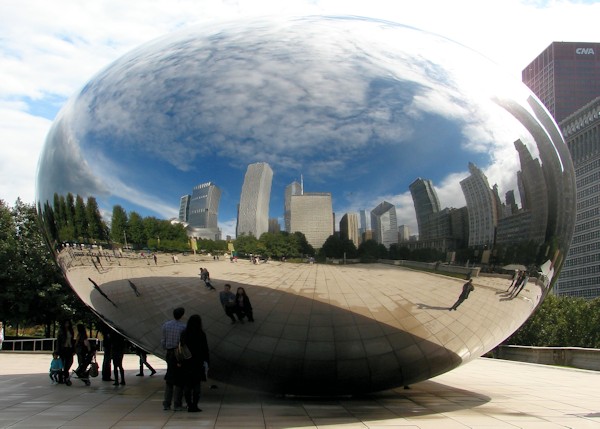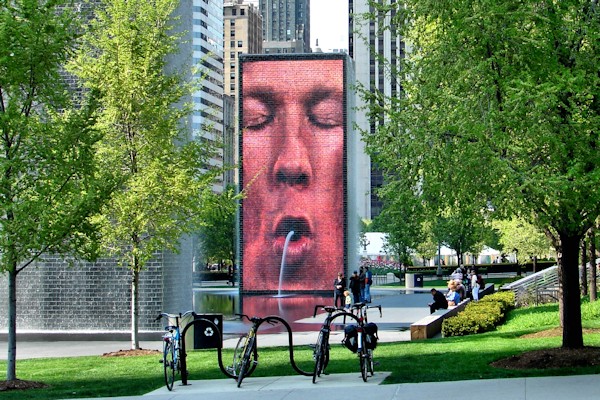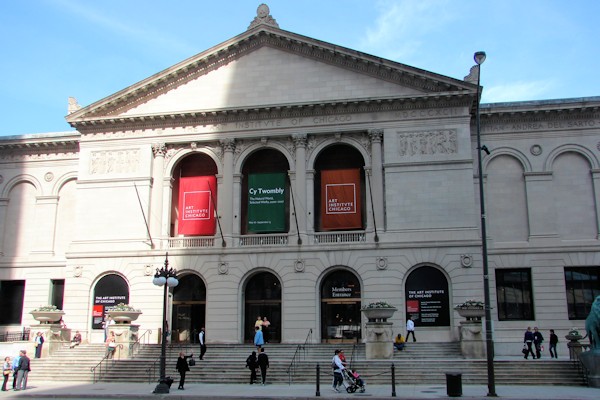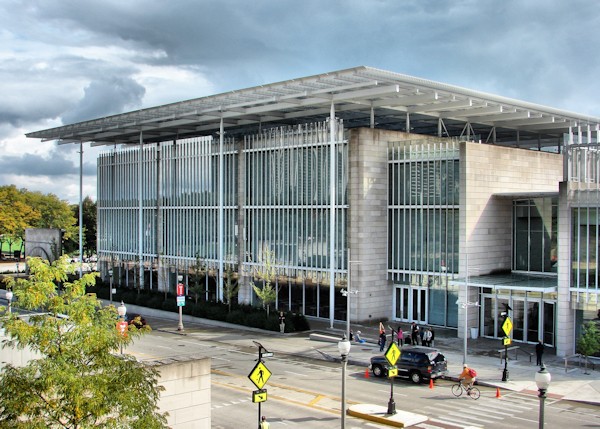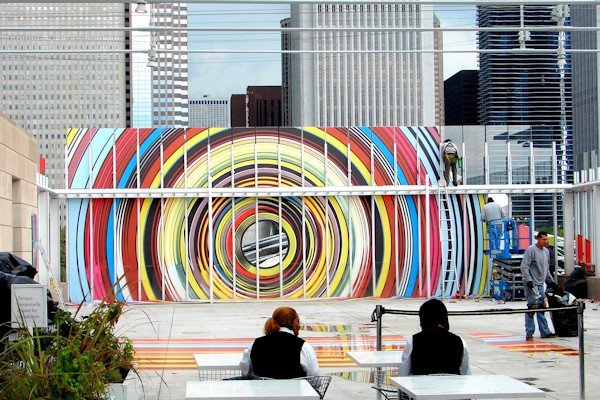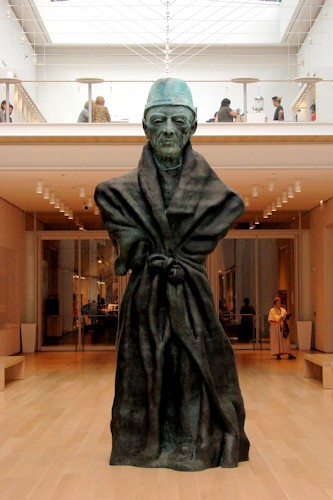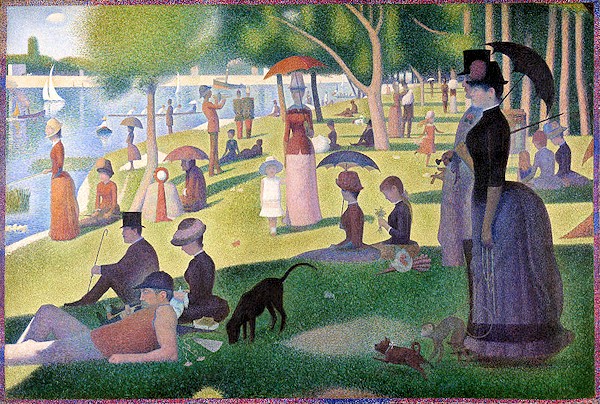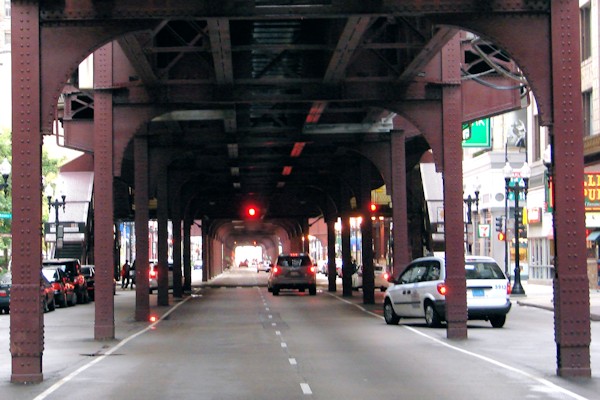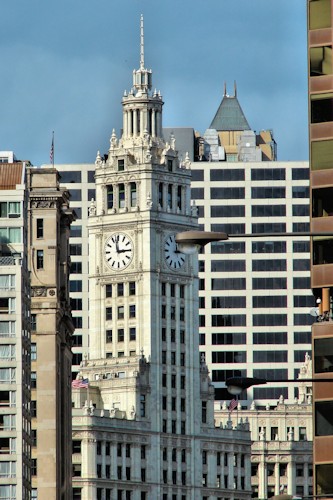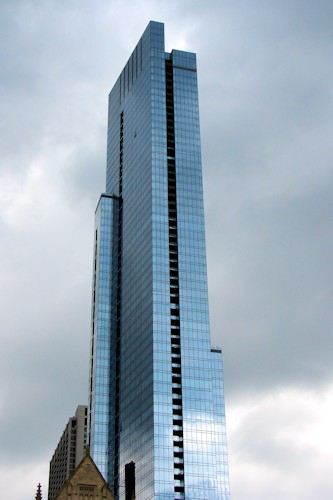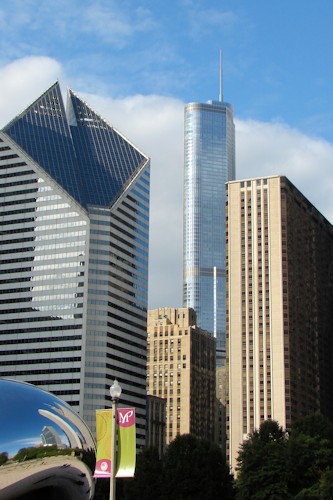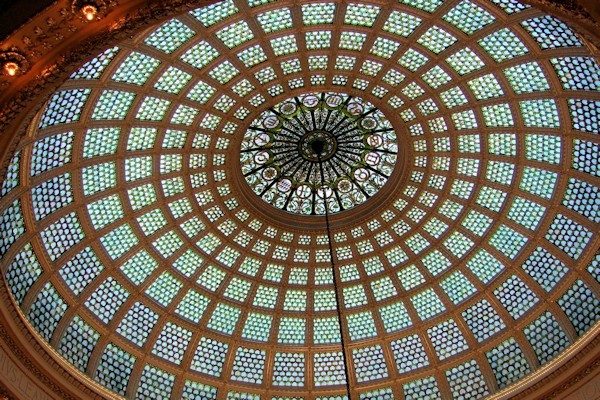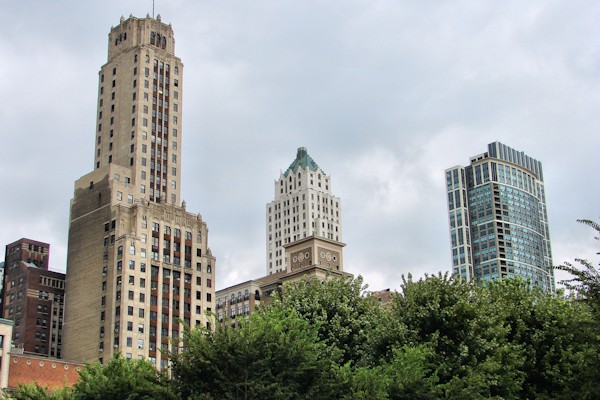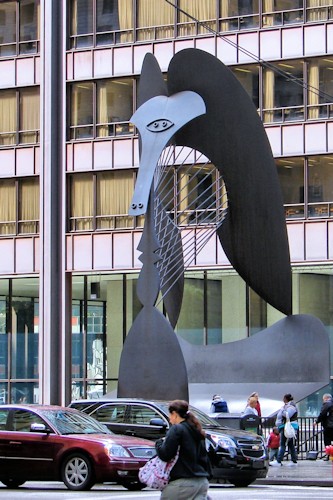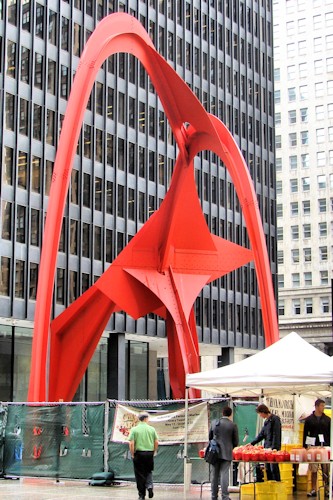The tours run by the Chicago Architectural Foundation
are a great way to see a lot of Chicago's very interesting
architecture. This is the State and Madison entrance to Louis
Sullivan's 1899 Carson Pirie Scott Building. Actually CPS
purchased this building in 1904, and sold it in 2007. Now they
call it Sullivan Center, and Target is planning to occupy the two
ground floors. | 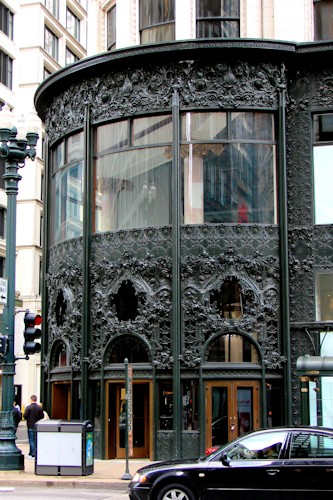 |
The
firm of Adler and Sullivan was also responsible for the Auditorium
Building. This was a Richardson Romanesque inspired building
housing a 3929 seat auditorium, a luxury hotel and offices. When
it was completed in 1889, it was the most voluminous, heaviest building
in the world. One of the draftsmen on this project was a young
Frank Lloyd Wright. Maybe he designed these windows in one of the
grand stairwells. The auditorium is still active, but the whole
building is now owned by Roosevelt University. | 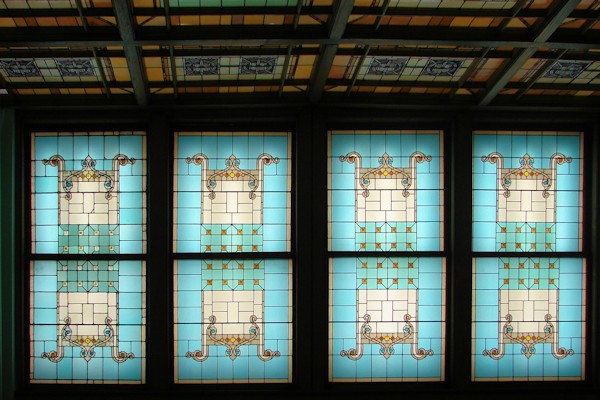 |
The
Palmer House has had many lives. The first Palmer House was
completed just 13 days before it was destroyed by the Chicago Fire of
1871. Then it was rebuilt and expanded to 7 stories, opening in
1875. The third incarnation was an expansion to 25 stories on the
same site, State and Monroe. This was designed by Holabird &
Roche, and when it opened in 1925, it was described as the largest
hotel in the world. The lobby ceiling seen here comes from the
Holabird & Roche design. | 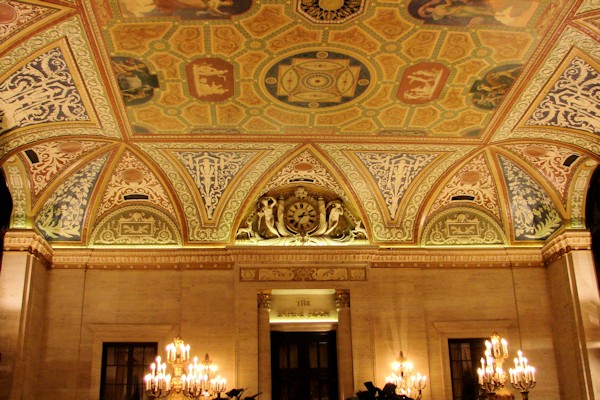 |
Marshall
Field's store was built over two decades from 1894 to 1914. Most
of the design was done by Charles Atwood, working with Daniel Burnham
& Co. This is the 7.5 ton Great Clock, installed in 1897,
diagonally across from the Atwood designed Hotel Burnham (Reliance
Building). | 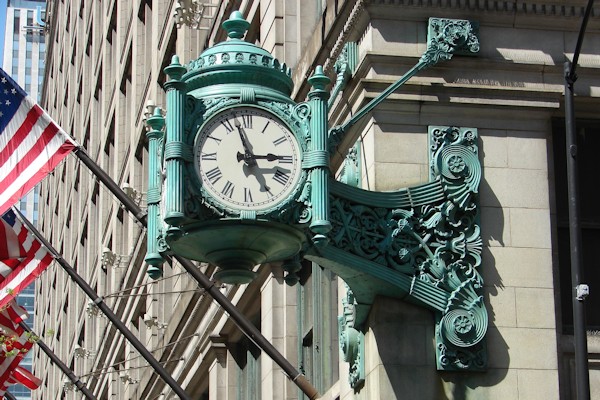 |
The
huge Marshall Field building is now inhabited by Macy's. (How
boring.) However, the three major atria remain. One, a
five-story atrium, is capped by this irridescent ceiling created by
Tiffany & Co. This mosaic dome is 6000 square feet. | 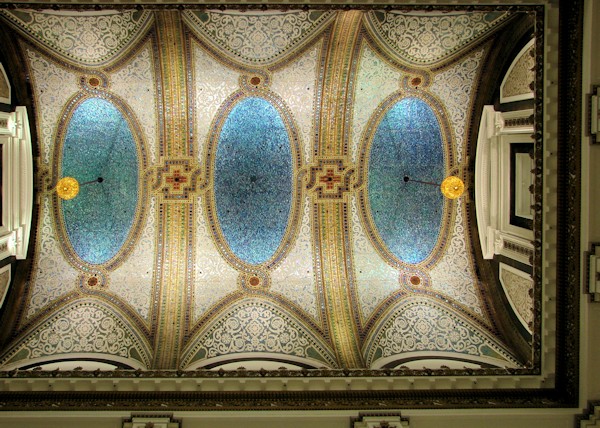 |
In
1891, Burnham & Root designed and built the Monadnock Building.
The north part of this block has the distinction of being the
tallest load-bearing masonry building ever built. It is 17
stories, 215 feet tall, and all the support is brick. The walls
are six feet thick at ground level, tapering to about one foot thick
for the attic level. This is not a building for earthquake
country. | 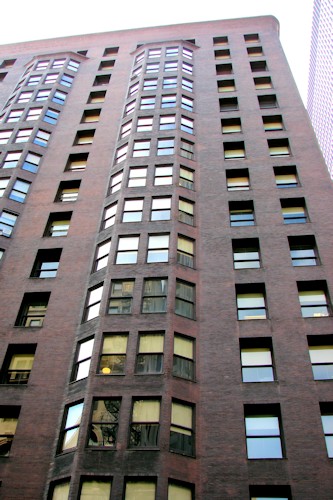 |
The
client wanted a very plain building, but Root got some decorative notes
in. The curves on the second floor and the bays for the third and
higher floors were inspired by Egyptian temples and columns. The
corners have a chamfer that increases from the base to the roof line.
For a plain building, this was very expensive to build.
There were a lot of bricks, some of them very specially shaped. | 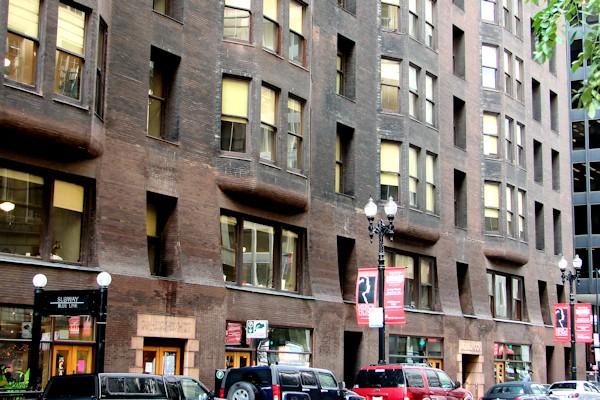 |
The
north building was joined by a south building in 1893, but Root had
died and the owners didn't want to duplicate the costs of the north
building. Holabird & Roche promised a lower cost building by
using a steel frame. The pair of buildings had their ups and
downs in the 20th century, but in 1979 the owners elected to restore
the building to its 19th century appearance, as indicated by this
corridor. Commercially, this was a real success. | 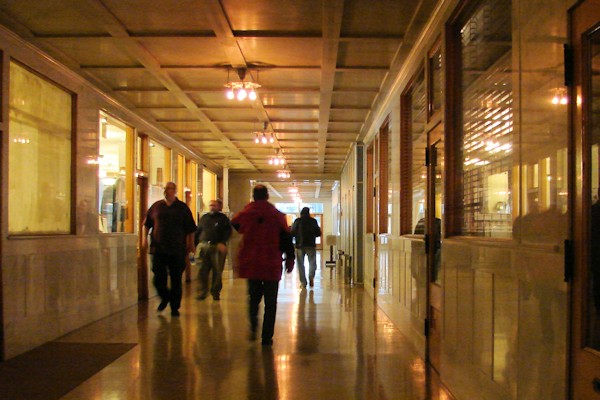 |
This
is the Art Deco elevator lobby of the Chicago Board of Trade building.
This was new for our tour, built in 1930, but the architects were
familiar, Holabird & Roche. I don't have a great exterior
shot, but this was the tallest building in Chicago until 1955. | 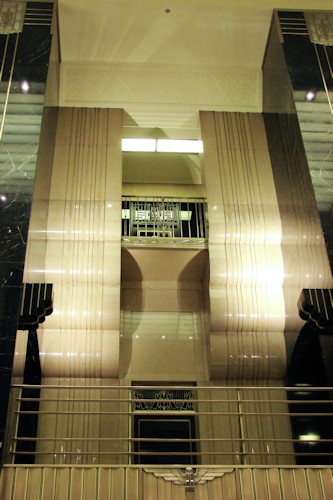 |
